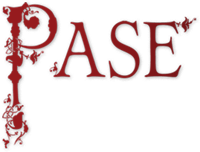Esbern 11
Esbern ‘of Swallow’ (Lincs.), fl. 1066
Male
CPL
4 of 5
Summary
Esbern 11 had two manors assessed at 2 carucates 5 bovates and worth 40 shillings in north-east Lincolnshire.Distribution map of property and lordships associated with this name in DB
List of property and lordships associated with this name in DB
Holder 1066
| Shire | Phil. ref. | Vill | DB Spelling | Holder 1066 | Lord 1066 | Tenant-in-Chief 1086 | 1086 Subtenant | Fiscal Value | 1066 Value | 1086 Value | Conf. | Show on Map |
|---|---|---|---|---|---|---|---|---|---|---|---|---|
| Lincolnshire | 12,17 | Swallow | Sbern | Esbern 'of Swallow' | - | Alan, count | Picot of Lascelles | 1.50 | 1.00 | 3.00 | E | Map |
| Lincolnshire | 12,19 | Fulstow | Sbern | Esbern 'of Swallow' | - | Alan, count | Picot of Lascelles | 1.13 | 1.00 | 2.00 | E | Map |
| Totals | ||||||||||||
Profile
Esbern 11 held two estates of similar size less than 10 miles apart which passed to the same successor. At Fulstow he was joint-holder with a Rolf who does not occur elsewhere in connection with an Esbern. That may mean that two different Esberns are involved here. It is also conceivable that Esbern 11 was the same man as Esbern 12, Esbern 13, and Esbern 15 on the grounds of the considerable overlap of their estates in this district.General remarks applicable to Esbern 11–18. Estates ascribed to Esbern are especially thick on the ground in north Lincolnshire and present great difficulties in identification. Seventeen small or very small holdings were involved, with an average assessment of less than 1 carucate, and at their extremities situated 50 miles apart. It is inconceivable that they belonged to one man. It is also clear from the identifications of Esberns 7–10 that the name was common enough in the Danelaw for a multiplicity of Lincolnshire Esberns to be plausible.
These Lincolnshire estates were held by eight different successors in 1086. All eight had very scattered fiefs in Lincolnshire, none of which was constructed on a geographical basis, thus ruling out the possibility that the properties of a super-Esbern had been divided up for that reason.
We have judged it most likely that each of the tenants-in-chief succeeded to one distinct Esbern, but it is possible that there were fewer, especially in the 15-mile stretch of country between the Wolds and the mouth of the Humber, where the estates concerned clustered and overlapped most densely.
